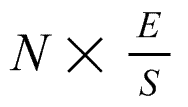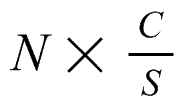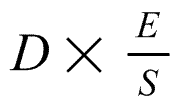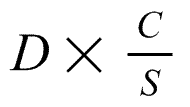- Latest available (Revised)
- Original (As enacted)
Bankruptcy and Diligence etc. (Scotland) Act 2007
You are here:
- Show Geographical Extent(e.g. England, Wales, Scotland and Northern Ireland)
- Show Timeline of Changes
More Resources
Changes to legislation:
Bankruptcy and Diligence etc. (Scotland) Act 2007,
Part 9
is up to date with all changes known to be in force on or before 13 December 2024. There are changes that may be brought into force at a future date. Changes that have been made appear in the content and are referenced with annotations.![]()
Changes to Legislation
Revised legislation carried on this site may not be fully up to date. Changes and effects are recorded by our editorial team in lists which can be found in the ‘Changes to Legislation’ area. Where those effects have yet to be applied to the text of the legislation by the editorial team they are also listed alongside the legislation in the affected provisions. Use the ‘more’ link to open the changes and effects relevant to the provision you are viewing.
Changes and effects yet to be applied to Part 9:
- s. 176(2A) inserted by 2024 asp 9 s. 19(2)
Changes and effects yet to be applied to the whole Act associated Parts and Chapters:
Whole provisions yet to be inserted into this Act (including any effects on those provisions):
- s. 176(2A) inserted by 2024 asp 9 s. 19(2)
Part 9 SDiligence against earnings
199Simultaneous operation of arrestments against earnings where net earnings insufficientS
(1)In section 58 of the 1987 Act (simultaneous operation of earnings arrestment and current maintenance arrestment), for subsection (2) substitute—
“(2)If on any pay-day N is less than S, the employer shall operate both the earnings arrestment and the current maintenance arrestment in accordance with subsection (3) below.
(3)The employer shall—
(a)for the purposes of section 47(1) of this Act, deduct the sum equal to—
; and
(b)for the purposes of section 51(1) of this Act, deduct the sum equal to—
.
(4)In subsections (2) and (3) above—
N is the amount of any net earnings in so far as they exceed the sum mentioned in subsection (2)(b) of section 53 of this Act for the number of days mentioned in subsection (2)(a) of that section;
E is the sum which the employer is required to deduct under section 47(1) of this Act;
C is the sum which the employer is required to deduct under section 51(1) of this Act; and
S is the total of E and C.”.
(2)In section 63(5)(b) of that Act (sum payable under conjoined arrestment order including both ordinary debts and current maintenance), for “all the debts were current maintenance” substitute “ the only debts were the current maintenance debts ”.
(3)In Schedule 3 to that Act (disbursement under conjoined arrestment order)—
(a)in paragraph 4, for the words from “priority” to the end substitute “ disbursement shall be in accordance with paragraph 4A below. ”; and
(b)after that paragraph, insert—
Where—
(a)only one of the debts is an ordinary debt, the creditor in that debt shall be paid the sum equal to—
;
(b)more than one of the debts is an ordinary debt, each of the creditors in those debts, out of the sum mentioned in sub-paragraph (a) above, shall be paid the same proportion of the amount of that creditor's debt;
(c)only one of the debts is current maintenance, the creditor in that debt shall be paid the sum equal to—
;
(d)more than one of the debts is current maintenance, each of the creditors in those debts, out of the sum mentioned in sub-paragraph (c) above, shall be paid the same proportion of the amount of that creditor's debt,
where—
D is the sum deducted under subsection (5) of section 63 of this Act;
E is the sum deducted under paragraph (a) of that subsection;
C is the sum which would, if the only debts were the current maintenance debts, be deducted under subsection (3) of that section; and
S is the total of E and C.”.
200Arrestment of earnings: deductions from holiday payS
(1)In section 47(1) of the 1987 Act (general effect of earnings arrestment), after “section 49” insert “ or 49A ”.
(2)In section 49(1) of that Act (method of calculating deduction from earnings), at the beginning insert “ Subject to section 49A of this Act, ”.
(3)After section 49 of that Act, insert—
“49ADeductions where net earnings include holiday pay
(1)This section applies where—
(a)the debtor's earnings are paid at regular intervals; and
(b)on one pay-day (in this section, the “normal pay-day”) there are paid to the debtor both—
(i)earnings normally payable on that pay-day (in this section, “normal earnings”); and
(ii)earnings such as are mentioned in subsection (2) below (in this section, “holiday pay”).
(2)Holiday pay is earnings which—
(a)are paid in respect of a period of annual leave or public holiday; and
(b)would, were they not paid in respect of such leave or holiday, have been paid on a pay-day other than the normal pay-day.
(3)In arriving at the sum to be deducted under section 47 of this Act on the normal pay-day, subsections (4) to (8) below shall apply.
(4)Calculate in accordance with section 49 of this Act the sum, if any, which would be deducted from the normal earnings if the holiday pay had not been paid on the normal pay-day.
(5)Where—
(a)the debtor's normal earnings are payable weekly, monthly or at regular intervals of a whole number of weeks or months; and
(b)all of the holiday pay relates to a whole number of weeks or months,
the sum, if any, to be deducted from the holiday pay shall be the sum arrived at by applying sub-paragraphs (i) to (iii) of section 49(1)(c) of this Act to the holiday pay as if it were the net earnings mentioned in that sub-paragraph (i).
(6)Where the debtor's normal earnings are payable weekly, monthly or at regular intervals of a whole number of weeks or months but part of the holiday pay relates to a whole number of weeks or months and part does not, the sum, if any, to be deducted from the holiday pay shall be the sum arrived at by—
(a)in relation to the part of the holiday pay which relates to a whole number of weeks or months, applying subsection (5) above to that part;
(b)in relation to the part of the holiday pay which does not relate to a whole number of weeks or months, applying paragraphs (a) to (c) of section 49(2) of this Act to that part of the holiday pay as if it were the net earnings mentioned in that paragraph (a); and
(c)aggregating the sums arrived at as mentioned in paragraphs (a) and (b) above.
(7)Where—
(a)the debtor's normal earnings are payable weekly, monthly or at regular intervals of a whole number of weeks or months but none of the holiday relates to such a whole number of weeks or months; or
(b)the debtor's normal earnings are payable at regular intervals other than at intervals to which paragraph (a) above applies,
the sum, if any, to be deducted from the holiday pay shall be arrived at by applying paragraph (b) of subsection (6) above to the holiday pay.
(8)Aggregate—
(a)the deduction, if any, calculated under subsection (4) above; and
(b)the deduction, if any, calculated under subsection (5), (6) or, as the case may be, (7) above.”.
201Provision of debt advice and information packageS
(1)In section 47 of the 1987 Act (general effect of earnings arrestment)—
(a)in subsection (2)(a), after “shall” insert “ , subject to subsection (3) below, ”; and
(b)after subsection (2) insert—
“(3)An earnings arrestment shall not come into effect unless, no earlier than 12 weeks before the date on which the earnings arrestment schedule is served, the creditor has provided the debtor with a debt advice and information package.
(4)In this section and in sections 51(2A) and 60(3A) of this Act, “debt advice and information package” means the debt advice and information package referred to in section 10(5) of the Debt Arrangement and Attachment (Scotland) Act 2002 (asp 17).”.
(2)In section 51 of that Act (general effect of current maintenance arrestment)—
(a)in subsection (2)(a), after “shall” insert “ , subject to subsection (2A) below, ”; and
(b)after subsection (2) insert—
“(2A)A current maintenance arrestment shall not come into effect unless, no earlier than 12 weeks before the date on which the current maintenance arrestment schedule is served, the creditor has provided the debtor with a debt advice and information package.”.
(3)In section 60 of that Act (conjoined arrestment orders), after subsection (3) insert—
“(3A)It shall not be competent to make a conjoined arrestment order unless, no earlier than 12 weeks before the date of the application under subsection (2) above, the creditor has provided the debtor with a debt advice and information package.”.
(4)In section 73(1) of that Act (interpretation), after the definition of “current maintenance” insert—
““debt advice and information package” has the meaning given by section 47(4) of this Act;”.
202Intimation of arrestment scheduleS
(1)Section 70 of the 1987 Act is amended as follows.
(2)In subsection (1), for the words “, if reasonably practicable,” substitute “ take all reasonably practicable steps to ”.
(3)After subsection (4), insert—
“(4A)An employer on whom an earnings arrestment schedule or a current maintenance arrestment schedule is served shall, as soon as is reasonably practicable—
(a)intimate a copy of it to the debtor; and
(b)notify the debtor of—
(i)the date on which the first deduction is made; and
(ii)the sum so deducted.
(4B)An employer on whom a copy of a conjoined arrestment order is served shall, as soon as is reasonably practicable, notify the debtor of the matters mentioned in sub-paragraphs (i) and (ii) of subsection (4A)(b) above.”.
203Provision of informationS
After section 70 of the 1987 Act, insert—
“70AEmployer's duty to provide information
(1)Where an employer receives, in relation to a debtor—
(a)an earnings arrestment schedule;
(b)a current maintenance arrestment schedule; or
(c)a copy of a conjoined arrestment order,
the employer shall, as soon as is reasonably practicable, send to the creditor or, in the case of a conjoined arrestment order, the sheriff clerk, the information mentioned in subsection (3) below.
(2)The employer shall, provided the debt has not been extinguished, send, on or as soon as is reasonably practicable after the dates mentioned in subsection (4) below, to the creditor or, as the case may be, the sheriff clerk the information mentioned in subsection (3) below.
(3)The information referred to in subsection (1) above is—
(a)how the debtor is paid (whether weekly, monthly or otherwise);
(b)the date of the debtor's pay-day next following—
(i)where subsection (1) above applies, receipt of the schedule or order; or
(ii)where subsection (2) above applies, the date mentioned in subsection (4) below;
(c)the sum deducted on that pay-day and the net earnings from which it is so deducted; and
(d)any other information which the Scottish Ministers may, by regulations, prescribe.
(4)The dates referred to in subsection (2) above are—
(a)the later of—
(i)6 April next following receipt of the schedule or order; or
(ii)the day falling 6 months after receiving the schedule or order; and
(b)each 6 April thereafter.
(5)Notwithstanding subsections (1) and (2) above, the employer shall, if the debtor ceases for whatever reason to be employed by the employer, give notice, as soon as is reasonably practicable, to the creditor or, as the case may be, the sheriff clerk—
(a)of that fact; and
(b)in so far as is known to the employer, the name and address of any new employer of the debtor.
(6)Where an employer sends information under subsection (1) or (2) above or gives notice under subsection (5) above, the employer shall, as soon as is reasonably practicable, send a copy of that information or notice to the debtor.
70BFailure to give notice under section 70A(5)
(1)Where an employer fails without reasonable excuse to give notice under section 70A(5) of this Act, the sheriff may, on the application of any creditor, make an order requiring the employer—
(a)to provide such information as is known to the employer as to the debtor's employment after ceasing to be employed by that employer;
(b)to pay to the creditor an amount not exceeding twice the sum which the employer would have been required to deduct on the debtor's next pay-day had the debtor still been employed by that employer.
(2)Where a sum is paid by virtue of an order under subsection (1)(b) above—
(a)the debt owed by the debtor to the creditor shall be reduced by that sum; and
(b)the employer shall not be entitled to recover that sum from the debtor.
(3)An employer aggrieved by an order under subsection (1) above may, before the expiry of the period of 14 days beginning with the day on which the order is made, appeal, on point of law only, to the sheriff principal, whose decision shall be final.
70CCreditor's duty to provide information
(1)A creditor who is receiving payment from a debtor by virtue of—
(a)an earnings arrestment;
(b)a current maintenance arrestment; or
(c)a conjoined arrestment order,
shall, provided the debt has not been extinguished, send, on or as soon as is reasonably practicable after the dates mentioned in subsection (2) below, to the employer or, in the case of a conjoined arrestment order, the sheriff clerk the information mentioned in subsection (3) below.
(2)The dates referred to in subsection (1) above are—
(a)the later of—
(i)6 April next following service of the schedule of arrestment or, as the case may be, order; or
(ii)the day falling 6 months after the service of the schedule or order; and
(b)each 6 April thereafter.
(3)The information referred to in subsection (1) above is—
(a)the sum owed by the debtor to the creditor;
(b)the amounts received by the creditor by virtue of the arrestment or order; and
(c)the dates of payment of those amounts.
70DDebtor's duty to provide information
Where a debtor ceases to be employed by an employer who is deducting sums under this Part of this Act, the debtor shall give notice to the creditor or, where those sums are being deducted by virtue of a conjoined arrestment order, the sheriff clerk—
(a)of that fact; and
(b)of the name and address of any new employer.”.
204Conjoined arrestment orders: jurisdictionS
In section 73(1) of the 1987 Act (interpretation of Part 3 of that Act), in paragraph (c) of the definition of “sheriff”, for the words from “the” where it second occurs to the end substitute—
“(i)the place where the debtor is principally employed;
(ii)where that place is outside Scotland, any other place where the debtor is employed; or
(iii)where neither sub-paragraph (i) nor sub-paragraph (ii) above applies, the place where the debtor is domiciled.”.
205Arrestment of seamen's wagesS
In section 73 of the 1987 Act (interpretation of Part 3 of that Act), subsections (3)(c) and (4) are repealed.
Options/Help
Print Options
PrintThe Whole Act
PrintThis Part only
You have chosen to open The Whole Act
The Whole Act you have selected contains over 200 provisions and might take some time to download. You may also experience some issues with your browser, such as an alert box that a script is taking a long time to run.
Would you like to continue?
You have chosen to open The Whole Act as a PDF
The Whole Act you have selected contains over 200 provisions and might take some time to download.
Would you like to continue?
You have chosen to open The Whole Act without Schedules
The Whole Act without Schedules you have selected contains over 200 provisions and might take some time to download. You may also experience some issues with your browser, such as an alert box that a script is taking a long time to run.
Would you like to continue?
You have chosen to open The Whole Act without Schedules as a PDF
The Whole Act without Schedules you have selected contains over 200 provisions and might take some time to download.
Would you like to continue?
You have chosen to open the Whole Act
The Whole Act you have selected contains over 200 provisions and might take some time to download. You may also experience some issues with your browser, such as an alert box that a script is taking a long time to run.
Would you like to continue?
You have chosen to open the Whole Act without Schedules
The Whole Act without Schedules you have selected contains over 200 provisions and might take some time to download. You may also experience some issues with your browser, such as an alert box that a script is taking a long time to run.
Would you like to continue?
You have chosen to open Schedules only
The Schedules you have selected contains over 200 provisions and might take some time to download. You may also experience some issues with your browser, such as an alert box that a script is taking a long time to run.
Would you like to continue?
Legislation is available in different versions:
Latest Available (revised):The latest available updated version of the legislation incorporating changes made by subsequent legislation and applied by our editorial team. Changes we have not yet applied to the text, can be found in the ‘Changes to Legislation’ area.
Original (As Enacted or Made): The original version of the legislation as it stood when it was enacted or made. No changes have been applied to the text.
See additional information alongside the content
Geographical Extent: Indicates the geographical area that this provision applies to. For further information see ‘Frequently Asked Questions’.
Show Timeline of Changes: See how this legislation has or could change over time. Turning this feature on will show extra navigation options to go to these specific points in time. Return to the latest available version by using the controls above in the What Version box.
Explanatory Notes
Text created by the Scottish Government to explain what the Act sets out to achieve and to make the Act accessible to readers who are not legally qualified. Explanatory Notes were introduced in 1999 and accompany all Acts of the Scottish Parliament except those which result from Budget Bills.
More Resources
Access essential accompanying documents and information for this legislation item from this tab. Dependent on the legislation item being viewed this may include:
- the original print PDF of the as enacted version that was used for the print copy
- lists of changes made by and/or affecting this legislation item
- confers power and blanket amendment details
- all formats of all associated documents
- correction slips
- links to related legislation and further information resources
Timeline of Changes
This timeline shows the different points in time where a change occurred. The dates will coincide with the earliest date on which the change (e.g an insertion, a repeal or a substitution) that was applied came into force. The first date in the timeline will usually be the earliest date when the provision came into force. In some cases the first date is 01/02/1991 (or for Northern Ireland legislation 01/01/2006). This date is our basedate. No versions before this date are available. For further information see the Editorial Practice Guide and Glossary under Help.
More Resources
Use this menu to access essential accompanying documents and information for this legislation item. Dependent on the legislation item being viewed this may include:
- the original print PDF of the as enacted version that was used for the print copy
- correction slips
Click 'View More' or select 'More Resources' tab for additional information including:
- lists of changes made by and/or affecting this legislation item
- confers power and blanket amendment details
- all formats of all associated documents
- links to related legislation and further information resources




